This report highlights top ten cases of the grave crisis faced by India’s Urban Rivers during the past one year.
1. Reality of Sabarmati River in Ahmedabad Effluents from 4 CETPs don’t meet parameters The untreated influent as well treated effluent from 4 CETPs under the Ahmedabad Municipal Corporation jurisdiction do not adhere to prescribed parameters, stated 2 draft reports of CSIR–NEERI. The 2 draft reports submitted to the PCB on March 24, 2022 with respect to functioning of 4 of the total 7 CETPs under AMC jurisdiction — Naroda Enviro Project Ltd (NEPL), Gujarat Vepari Maha Mandal Odhav (GVMM), CETP Green Environment Services Co-op Society Ltd (GESCL) Vatva and CETP Narol Textile Infrastructure & Enviro Management (NTIEM) Narol.
The 2 drafts reports were submitted before the Gujarat HC on March 24 by way of an affidavit by GPCB in relation to a suo motu PIL being heard by the Gujarat HC concerning pollution in Sabarmati river. GPCB in its affidavit submitted that pursuant to the CSIR NEERI analyses of the 4 CETPs, the reports have also been forwarded to the concerned CETPs and have been asked to furnish the timeline of action plan to the GPCB at the earliest. Notably, CM Bhupendra Patel had told the Assembly that Rs 136 crore was spent in 2020 and 2021 to clean up Sabarmati river. https://indianexpress.com/article/cities/ahmedabad/sabarmati-river-pollution-effluents-from-4-cetps-dont-meet-parameters-report-7838085/ (27 March 2022)
Water hyacinth choking river Vast stretches of the Sabarmati River in Ahmedabad near Indira Bridge is covered by this invasive species. Ahmedabad Municipal Corp engineering department officials said that pollution and lack of freshwater are behind the sudden spread.
“These nutrients are mainly because at some points sewage is discharged into the river,” added a AMC official. Last week, the AMC admitted to the high court that its 25 MLD sewage treatment plant at Shankar Bhuvan did not meet the prescribed standards for fecal coliform bacteria and total nitrogen. https://timesofindia.indiatimes.com/city/ahmedabad/water-hyacinth-choking-sabarmati-near-indira-bridge/articleshow/91328531.cms (05 May 2022)
CPCB finds high level of pollution in Sabarmati river A report by the Central Pollution Control Board (CPCB) over wastewater being discharged in the Sabarmati river in Ahmedabad, following directions from the High Court last month, stated that several polluting indicators exceed the permissible or prescribed STP parameters. https://indianexpress.com/article/cities/ahmedabad/gujarat-hc-looking-into-option-of-joint-taskforce-cpcb-finds-high-level-of-pollution-in-sabarmati-river-7509375/ (15 Sept. 2021)
Illegal industry release turns Sabarmati into dead river, ‘agree’ AMC In a surprise admission, the Ahmedabad Municipal Commission (AMC) has said that “ill-treated or untreated or partly treated” industrial waste from “improperly working” effluent treatment plants (ETPs) is being “discharged into Sabarmati directly”. It added in an affidavit filed in the Gujarat HC that “completely untreated industrial discharge” is also being “illegally discharged into the sewerage network” designed for household sewage.
It further admitted, there has been “illegal industrial discharge into sewerage access points such as manholes or machine-holes at odd hours (such as, in the middle of the night) by using tankers and flexible pipes.” Worse, there is “reverse boring of industrial discharge or usage of defunct/ unused bore-wells or percolation wells to discharge industrial waste directly into the ground”, it added. https://www.counterview.net/2021/10/illegal-industry-release-turns.html (03 Oct. 2021)
River turns red then dead: Study A team of geographic information system (GIS) experts from three universities examined LANDSAT satellite images from the US Geological Survey to measure the turbidity levels of the Sabarmati, which runs through the heart of Ahmedabad. The experts found that pollution levels dropped by 36% during the lockdown. Maps were acquired for a five-year period: 2015 to 2020. The maps show that the river stretch within the city normally appears deep yellow, red, and green: the signs of heavy pollution. The river turned blue, reflecting the hue of resurrection, during the corona closure.
The LANDSAT maps contained colour coded reflectance data. They showed turbidity levels, which result from industrial and domestic sewage discharges, improving by more than 36% in the April-May 2020. Turbidity levels had gone up as high as 19.39 milligram per litre (mg/l) by February 2020. In May, they dropped to just 5 mg/l. The river stretch near Sardar Patel Bridge had the highest amount of metal contamination when compared to upstream, suggesting high anthropogenic activities, the research paper said. https://timesofindia.indiatimes.com/city/ahmedabad/sabarmati-turns-red-then-dead/articleshow/86950724.cms (12 Oct. 2021)
2. Reality behind 3 smart city awards to Varanasi Curious Case of Ramna STP Large scale STPs are being promoted as must have infrastructure to control Urban sewage pollution. However, most of the Large Scale STPs are mired in controversies from planning to construction and during operational phase, often failing to achieve the basic objective for which they are built, investing crores of rupees. A case in point is Ramna STP of Kashi.
Planned in 2015 to tap Nagwa, Assi river polluting Ganga; DPR GROSSLY UNDERESTIMATED pollution load to be about 40 MLD and proposed 50 MLD capacity enough till 2030. In Feb 2018 work began; completion target was 1st set April 2020 then Dec 2020. On PPP mode with 15 years O&M, contract was given to Essel Infra costing ~₹154cr. Trapped in Yes Bank scam, Essel Infra later became bankrupt but was forced to finish work. In Nov 2020 was fined ₹3cr for violation. Dec 2020 target replaced with March 2021. Cost up by ₹10cr. In June 2021 trial sewage load found 60 MLD. Its Nov 2021 & the HAM Ramna STP still out of work. Interestingly in 2010 itself, SMF had found Nagwa pollution load about 64 MLD, estimated to be 80 MLD now & govt agrees. https://sandrp.in/2021/11/11/uttar-pradesh-curious-case-of-ramna-stp-in-kashi/ (11 Nov. 2021)
“The work on the Ramna STP is a total wastage of money and time, as it is not only overburdened but also incorrect from the point of view of engineering,” said Prof. Vishwambhar Nath Mishra, president of Sankat Mochan Foundation (SMF). “For the first time, we had made an actual measurement of sewage discharge into the Ganga through Nagwa drain in 2010. At that time the sewage discharge was 64 MLD, which would have surely increased up to over 80 MLD in a decade,” Prof. Mishra told TOI. “The basic problem is that the persons not knowing the basics of river anatomy, morphology and dynamics are claiming to be great doctors of the river,” said noted river engineer and director of the Mahamana Malviya Institute of Technology for Ganga Management and former professor at IIT-BHU Prof. UK Chowdhary. https://timesofindia.indiatimes.com/city/varanasi/experts-raise-doubt-over-efficacy-of-50-mld-ramna-stp/articleshow/84278775.cms (10 July 2021)
On the first day of the new year, when the locals and pilgrims were taking a dip in the Ganges, untreated sewage from Nagwan Nala was contaminating the river. https://www.patrika.com/varanasi-news/city-sewerage-continues-to-fall-into-ganga-in-varanasi-7252889/ (02 Jan. 2022)
Varanasi was supposed to be zero sewer discharge by Nov 2019 https://www.news18.com/news/india/three-decades-after-announcement-of-ganga-action-plan-varanasi-set-to-have-zero-sewer-discharge-by-november-2023693.html (03 Feb. 2019)
3 Smart City Awards for Varanasi, But Assi Still Polluted https://www.thequint.com/my-report/india-smart-city-awards-2020-varanasi-polluted-assi-river-ground-report#read-more (07 July 2021)
3. Reality of claimed cleanest cities of Indore and Ujjain Kshipra pollution getting worse Though Indore and Ujjain are listed in cleanest cities in India, untreated waste water from these cities is directly entering into Kshipra river. In past 15 years, pollution level in the river has only gone up despite spending about Rs. 700 crore on river cleaning.
According to a report of the Pollution Control Board, the main reason for the pollution of Shipra is uncontrolled urbanization and untreated sewage water getting into the river. Especially the untreated sewage of Indore, claimed to be the cleanest city, reaching Kshipra via Kanh river.
In November-2017, the government started an underground sewerage pipeline project worth Rs 402 crore, which was to be completed in the year 2019 as per the contract, but seeing the pace of the current work, it seems that this project will not be completed even till 2023. https://www.naidunia.com/madhya-pradesh/ujjain-shipra-river-pollution-ujjain-mokshadayini-shipra-water-is-not-for-useable-for-bathing-7122775 (08 Nov. 2021) https://www.abplive.com/states/madhya-pradesh/ujjain-news-mahamandaleshwar-gyandas-maharaj-on-hunger-strike-demands-to-shipra-river-purification-ann-1999325 (16 Nov. 2021)
The Kanh diversion scheme, made in Simhastha 2016 by spending about Rs 100 crores, with the expectation that it will help clean Kshipra. However, the scheme could not succeed in keeping Kshipra clean. In fact, Kanh diversion plan was made to divert only 5 cumecs of water, at present, Kanh river is getting twice as much water.
The Narmada-Kshipra link scheme worth Rs 450 crores has also failed to keep Kshipra clean due to rising pollution in Kanh river. https://www.patrika.com/ujjain-news/kshipra-is-waiting-to-be-rescued-from-the-dirty-water-of-kanh-river-7181410/ (19 Nov. 2021) https://www.naidunia.com/madhya-pradesh/ujjain-shipra-riever-ujjain-news-mp-7155672 (28 Nov. 2021) https://www.herzindagi.com/hindi/diary/origin-history-and-interesting-facts-about-river-shipra-article-188227 (24 Nov. 2021)
Spending of about Rs. 650 crores on Kshipra cleaning in past 20 years, has not made any difference. https://www.abplive.com/states/madhya-pradesh/madhya-pradesh-ujjain-shipra-river-water-pollution-650-crores-spent-ann-2018448 (17 Dec. 2021) https://www.abplive.com/states/madhya-pradesh/madhya-pradesh-ujjain-shipra-river-polluted-even-after-spending-more-than-500-crores-ann-2111639 (27 April 2022)
An earthen stop-dam at Triveni on the Kshipra collapsed on March 18, 2021 morning causing the dammed dirty water to release into the river. Dead fish covered the waterbody due to contamination. The administration had commissioned the stop-dam to prevent mixing of contaminated water of the Kanh with that of the Kshipra. The dam had been repaired before Makar Sankranti in January but was swept away due to rise in water-level in the Kanh. https://www.freepressjournal.in/indore/ujjain-earthen-stop-dam-collapses-kanh-water-contaminates-the-kshipra (18 March 2021) https://www.bhaskar.com/local/mp/ujjain/news/stop-dam-built-on-trivani-millions-of-gallons-of-muddy-water-of-khan-river-found-in-shipra-river-shipra-contaminated-by-5-km-128334254.html (March 2021)
For more details on reality of river pollution in Indore, see article by Rahul Banerjee: https://sandrp.in/2021/11/29/indore-is-still-very-much-water-minus/ and https://sandrp.in/2020/11/30/river-rejuvenation-in-indore-mendacity-displacing-common-sense/
4. Chennai Only half sewage being collected: CAG As of March 2019, only 52% of the sewage in the CMA was being collected through the sewerage system, leaving 48% uncollected. Of the collected sewage, only 88% was being treated before being let out, the report stated. The audit stated that the government, in response, said the claim that only 52% of sewage was collected was based on theoretical calculations. However, the Comptroller and Auditor General (CAG) stated that the reply was ‘untenable’.
Further, an estimated 242.73 mld of raw sewage illegally enters storm water drains and drains into water bodies including the Adyar, Buckingham Canal, Cooum etc. The plugging of polluted sewage outfalls into waterbodies, being executed under the aegis of the Chennai Rivers Restoration Trust (CRRT), remained ‘unachieved in full’ even four years after the scheduled date, the report stated. https://www.newindianexpress.com/cities/chennai/2021/jun/24/only-half-the-sewage-in-chennai-metropolitan-area-being-collected-says-cag-report-2320914.html (24 June 2021)
Over 1000 MLD untreated sewage let into rivers About 250 MLD of raw sewage enters the Chennai rivers including about 30 million litres from the Kodungaiyur and Perungudi landfills, both of which have functional STPs, a Metrowater study has found. Several of Metrowater’s STPs are running below capacity, while others run at just 50% capacity due to illegal connections to drains and lack of pipelines under narrow lanes. Metrowater plans to increase sewage treatment capacity by 450 MLD. The agency’s plants have the capacity to treat 745 MLD, but treat only 599 MLD. “This gap will be plugged after interventions and by adding infrastructure this year,” said executive director Akash P. The agency will also lay pipes in areas unconnected to main sewage lines.
“The agency should first admit that the sewage generated is more than 650 MLD. It claims it supplies 850 MLD of drinking water and that 80% of it returns as sewage. But it doesn’t acknowledge that two-thirds of the city’s water comes from borewells. This means 1,300MLD of groundwater is drawn daily, increasing the sewage generated to 1,500 MLD-1,800 MLD. With the present 550 MLD capacity, the actual raw sewage entering water bodies will be five times more,” he said. This is based on ‘Domestic Sewage consumption in Chennai,’ a study by A Vaidyanathan and J Saravanan which found only one-third of the city uses Metrowater’s 850 MLD and the rest uses borewell water, bottled water or own water. https://timesofindia.indiatimes.com/city/chennai/250-million-litres-of-raw-sewage-let-into-chennai-rivers-daily-says-study/articleshow/91137347.cms (28 April 2022)
All that ails drainage project The most contentious issue is that the Rs 2,470-crore project undertaken using a loan from the ADB covers ‘missing link’ of drains, built and linked at Rs 200 crore before the Kosasthalaiyar project tenders were finalized. Now, it includes several drains on the ‘missing link’ stretch which doesn’t require any new construction. Contractors say they are ready to compensate it by building drains for equal length in some other area in the city. Also, spending another Rs 200 crore in sandy parts of Madhavaram where concrete drains are not required because water percolation happens naturally and quickly, too has attracted criticism.
The DPR for the drain network was prepared in 2014-2015, but before it could be tendered, the missing link projects were completed by 2020. A contractor allotted a Rs 16 crore project in the Madhavaram zone said about Rs 4 crore worth drain construction was completed under the missing link drain. “I paid earnest money deposit and now I do not know what to do.”
A retired PWD official said there were several floodprone areas in the 128 sq km basin that has 8 major lakes and 71 minor tanks. “But the civic body lacks technical expertise. Most times, it doesn’t check gradients and most canals and drains constructed even in 2018 do not carry the water to the river,” he said, citing Ambattur surplus channel as an example. Unless the designs and gradients are right, these drains will only carry sewage as Metrowater hasn’t completed the underground sewerage system, he added. https://timesofindia.indiatimes.com/city/chennai/chennai-all-that-ails-kosasthalaiyar-drainage-project/articleshow/84191520.cms (07 July 2021)
5. Hyderabad River water unfit even for agriculture Water of Musi river is unfit even for irrigation, said researchers from Osmania University’s Centre Of Exploration Geophysics who made a recent study of the water quality. The researchers tested groundwater samples in the 60 km stretch of the river from Peerzadiguda on the city outskirts to Valigonda, where the Musi meets River Krishna, and found that till a depth of 40 metres the DO and BOD were way beyond prescribed parameters, due to the very high levels of contamination.
Researchers have noticed that indiscriminate disposal of urban and industrial wastewater into open nalas (drains) or other water bodies has been common practice in the agglomerated metropolis of Hyderabad. This has a negative impact on the plants, animals and human life and also the agrarian produce, they stressed. https://www.deccanchronicle.com/nation/in-other-news/300321/musi-water-unfit-even-for-agriculture.html (30 March 2021)
Musi remains among most polluted river River Musi has once again earned the dubious distinction of being named among the ‘34 most polluted river stretches’. “Every year, these officials pull off an elaborate stunt. Before the arrival of officials for inspection, including from NGT, the industries shut off their discharge into the river and collect clean samples. But, we have to live with the pollution day in and day out,” B Shankar, a resident of Edulabad said. While the CPCB, and SPCBs are expected to monitor industries with respect to effluent discharge standards and take action for non-compliance, it is a farce, say residents.
Based on the growth in population in the Musi watershed area over the last five decades, the total sewage generation is estimated to be around 1,625 MLD by 2029. The present sewage treatment capacity is 725.8 MLD, said an official from TSPCB. Apart from Musi the other rivers feature in the list are Manjeera, Nakkavagu, Karakavagu, Maner, Godavari, Kinnersani and Krishna. https://www.deccanchronicle.com/lifestyle/environment/080821/musi-remains-among-the-most-polluted-river-stretches.html (08 Aug. 2021)
A cocktail of chemical waste The Muchukunda river popularly known as the Musi river once a fresh water river, which used to be a matter of pride has become an embarrassment for the citizens of Hyderabad. Currently, almost nothing is being done to stop the dumping of waste and polluted waste seeping into the river.
Even the Rs 5.64 crore rubber dam had failed to filter the waste within 3 months after its installation, back in 2009 after it became choked with sewage and solid waste. The floating trash barriers set up to block the solid waste from entering downstream too failed as the dumping of trash and seepage of sewage is taking place across the stream. https://timesofindia.indiatimes.com/city/hyderabad/pride-of-city-musi-turns-into-a-cocktail-of-chemical-waste/articleshow/89081681.cms (24 Jan. 2022)
6. Lucknow Google Earth imagery shows thick frothing along 1km stretch of Gomti river downstream Lucknow due to untreated effluents from 346 MLD Bharwara STP existing there since 2011. As per reports Lucknow generates about 600 MLD of sewage while has 2 STPs with treatment capacity of about 401 MLD (346 MLD Bharwara and 56 MLD Daulatganj STP).

The sewage generation is expected to increase to about 1000 MLD in a decade. The Jal Nigam has been proposing 120 MLD STP to treat city’s biggest drain Ghiyasuddin Haidar canal. The STP would cost about Rs 400 crore and lacking funds, the state government had asked for Central aid.
Asia’s biggest 345 MLD Bharwara STP built costing ₹360 cr discharging effluents without adequate treatment into Gomti river, Lucknow. 03 Dec. 2021 Video. https://www.youtube.com/watch?v=IyJh4tCsoQI (04 Dec. 2021)
Gomti turning fast into sewage drain Nearly 68 drains are polluting River Gomti, a tributary of the Ganges. Crores of liters of dirty water from small and big cities like Lucknow and Sitapur are dumped in this river every day. The Gomti Pollution Control Unit sent a proposal to the Central Government to build 3 STPs under ‘Namami Gange’ in 2019. However, even after 2 years no work has been done on it. If the pollution in Gomti continues, soon this river will turn into a drain. https://hindi.mongabay.com/2021/04/05/gangas-tributary-gomti-is-converting-to-nullah/ (05 April 2021) 22 of the Gomti river’s 26 tributaries have almost dried up and there is no flow left in the remaining 4, says a report by an expert, Venkatesh Dutta who is professor of environmental science at Babasaheb Bhimrao Ambedkar University, Lucknow. https://www.hindustantimes.com/cities/lucknow-news/22-gomti-tributaries-have-almost-dried-up-no-flow-left-in-four-expert-s-report-101617300898939.html (01 April 2021)
Hindi report on how Asia’s biggest 345 MLD capacity STP failing miserably to clean Gomti river pollution in Lucknow. https://www.amarujala.com/lucknow/polluted-water-drawn-into-the-river-from-stp-lucknow-news-lko606108847 (26 Nov. 2021)
Govt measures have failed to stop pollution in Gomti river. https://www.amarujala.com/lucknow/untreated-water-is-main-reason-behind-gomti-river-pollution (26 March 2021)
The unabated pollution has also adversely affected fisherfolks and fish species in Gomti. https://hindi.mongabay.com/2021/04/05/gangas-tributary-gomti-is-converting-to-nullah/ (5 April 2021)
7. Mumbai Mithi ‘polluted to heavily polluted’ for past 11 years: MPCB Maharashtra Pollution Control Board’s (MPCB) water quality status report revealed that the 17.8 km long Mithi river, which begins at Vihar Lake within the Borivali National Park borders, has remained ‘polluted to heavily polluted’ for the last 11 years. The year 2012-13 was the only time in the previous 11 years when the Mithi river’s water quality was classified as non-polluted.
The MPCB released a report on Maharashtra’s Water Quality Status for 2020-21 this week. Mithi river’s overall WQI for the year was 44, putting it in the polluted category. This is despite years of desilting and cleaning efforts. The standing committee of the Brihanmumbai Municipal Corporation approved the building of tunnels to prevent the flow of raw sewage and wastewater into the Mithi river in early 2021. The project, however, is awaiting environmental approval. https://www.timesnownews.com/mirror-now/in-focus/mithi-river-has-remained-polluted-to-heavily-polluted-for-past-11-years-mpcb-water-quality-report-reveals-article-90755236 (10 April 2022)
Landfilling near River poses huge flood risk: Activists Environmentalist Sanjeev Valsan has also filed a police complaint against the ongoing landfilling. “It is sad to see landfilling is underway on five acres of land that is a floodplain and also the catchment area of Mithi River. This land is between old Aarey forest nursery at Marol toll naka and JVLR. There is a huge flood risk due to landfilling. Who is doing this? Does the Aarey CEO know about this?” “Our sources in the Aarey CEO office have said that a fuel station is coming up on the plot. We think that the CEO office has given approval to the project…” Valsan added. Activist Stalin D from NGO Vanashakti has written a letter to Chief Minister Uddhav Thackeray, seeking his intervention to stop the landfilling work. https://www.mid-day.com/mumbai/mumbai-news/article/landfilling-near-mithi-river-at-aarey-poses-huge-flood-risk-environmental-activists-23166398 (01 April 2021)
‘Construction of school on Ulhas floodplains worrisome’ Vanashakti on Dec. 27, 2021 wrote to authorities, including CM Uddhav Thackeray, raising alarm over continued constructions within the high flood line of the Ulhas River in Badlapur, Thane district.
Encroachment in the form of a private school is the latest to crop up in the region, despite previous orders of the NGT prohibiting any building activity on the floodplains, in addition to an amusement park and several real estate projects pointed out Vanashakti (a petitioner in Bombay HC, seeking to revive the water body). https://www.hindustantimes.com/cities/mumbai-news/construction-of-school-on-ulhas-river-floodplains-worrisome-101640632495625.html (28 Dec. 2021)
Sewage leaks into fresh water After an incident of sewage water getting mixed up with drinking water supply at the Khemani nullah area, a complaint has been lodged against Ulhasnagar Municipal Corporation (UMC) for criminal negligence.
“We are dismayed by the fact that despite the Ulhas river case being monitored by the Supreme Court, there is hardly any seriousness on the part of the polluter, be it industries or urban bodies like UMC, to stop this reckless activity endangering human lives. We urge you to initiate criminal proceedings against the guilty officers. A permanent diversion must be made on a war footing to avoid any such incident in the future,” Stalin wrote in his complaint. https://timesofindia.indiatimes.com/city/thane/mumbai-trouble-for-umc-as-sewage-leaks-into-fresh-water/articleshow/86383309.cms (21 Sept. 2021)
Detailed report on polluted and stinking Poisar, Dahisar rivers of Mumbai. https://www.hindustantimes.com/cities/mumbai-news/raising-a-stink-over-mumbai-s-polluted-rivers-101654110371108.html (02 June 2022)
8. Delhi Yamuna becoming potential reservoirs of superbugs Superbugs in our rivers are a growing concern. These are antibiotics resistant pathogens which develop in the gut of people with a tendency to misuse or overuse traditional antibiotics. Sewage originating from such homes is bound to carry such pathogens and in turn infect others too. Waters of river Yamuna are already known to carry such a superbug named appropriately NDM-1 which is short for New Delhi Metallo-beta-lactamase, a bacterial gene. Other sources of these superbugs are hospitals and cattle farms. Superbugs are now being reported from all over the world and there is a fear amongst health experts that unless better sense prevails, humans might be entering a post-antibiotic age. https://thedialogue.co.in/article/zr7vcBMw6ICocFsWQNqc/yamuna-and-other-wetlands-are-becoming-potential-reservoirs-of-superbugs– (Manoj Misra, YJA, 21 Sept. 2021)
Cleaning Yamuna: A story of missed deadlines After the first Yamuna Action Plan (YAP) in 1992 and second plans, YAP-III is presently under way, but the Yamuna is not even fit for bathing in the Delhi stretch, except for Palla — the point where the river enters Delhi — according to city government data. As per the final draft report of the NIH, a flow of 23 cusecs is needed in the lean season, but increasing the flow is not that easy due to existing interstate water treaties. City generates 720 MGD of sewage, the STPs have a capacity of 597.26 MGD. Of the total capacity, 514.2 MGD is utilised (86%). https://www.thehindu.com/news/cities/Delhi/cleaning-the-yamuna-a-story-of-missed-deadlines/article36422298.ece (13 Sept. 2021)
Yamuna dirtier than it was 3 months ago Pollution in Yamuna has worsened with the faecal bacteria level being at a record high of 14 times what existed three months ago. This has been revealed by the December 2021 water quality status report by Delhi Pollution Control Committee (DPCC). The analysis by DPCC’s Water Laboratory showed there were 41 STPs of DJB of which 35 were operational. However, only 8 were complying with the prescribed standards. Sewage generation from 22 major drains was 3,273 MLD, while the installed treatment capacity of STPs was 2,715 MLD. But only 2,182 MLD sewage was being actually treated. https://timesofindia.indiatimes.com/city/delhi/yamuna-dirtier-than-it-was-3-months-ago/articleshow/88938920.cms (17 Jan. 2022)
Yamuna water too toxic to treat for 134 days last year According to data from the Wazirabad water quality monitoring laboratory, the city witnessed 22 ammonia spike episodes spread over 134 days last year, during which ammonia levels went above 1 ppm level.
Cumulatively, for over 3 months during 2021, DJB reported ammonia levels higher than the maximum treatable limit, the data shows. DJB’s plants have the capacity to treat up to 0.9 ppm levels of ammonia in raw water. https://www.hindustantimes.com/cities/delhi-news/delhiyamuna-water-too-toxic-to-treat-for-134-days-last-year-101642616963126.html (20 Jan. 2022)
9. Ludhiana Sutlej pollution impacting villagers heath The plan to construct sewage treatment plants and common effluent treatment plants to clean water bodies polluting the Sutlej river in Ludhiana and Jalandhar, has been delayed. The deadline for installation of some of these plants under the Punjab government’s ‘Action Plan for Clean River Sutlej’ was December 2020.
Now, civil society members are planning to meet the union environment minister to expedite the work. The impact of pollution in the Sutlej river is felt even in Rajasthan, Punjab’s neighbouring state, as the polluted river water enters the desert state through Punjab’s Indira Gandhi canal. https://india.mongabay.com/2021/04/as-depolluting-sutlej-river-delayed-impact-on-health-continues/ (07 April 2021)
Budda Nala that flows for 14 km through the city and then goes on to join the Sutlej. As it passes through, it becomes the receptacle for chemical wastes, sewage, dairy effluents and garbage. The nala turns black and is an embarrassment for Ludhiana, but more significantly the pollution that goes into the nala compromises the quality of water in the Sutlej, one of Punjab’s principal rivers, which it joins after it leaves the city. https://civilsocietyonline.com/environment/ludhianas-cursed-budda-nala/ (29 Oct. 2021)
Inspection undertaken by the CPCB has found 86% of the STPs in catchment of the Sutlej to be non-compliant with the norms. CPCB had carried out an inspection of 14 STPs in the catchment of the Sutlej in June 2021 and found 12 STPs to be non-complying. With a large number of towns discharging their wastewater into the Sutlej, rising levels of toxicity in the river waters has become a major cause of concern as it poses a great health hazard. https://timesofindia.indiatimes.com/city/chandigarh/cpcb-finds-86-of-stps-in-satluj-catchment-area-non-compliant/articleshow/90716427.cms (08 April 2022)
10. Madurai How thirst quencher Vaigai turned dry Today the Vaigai river that flows through Madurai is bone dry within the city limits nearly 300 days a year, but for centuries it had sustained life along its banks. Encroachment at its origin, release of sewage and lack of desiltation over the years gradually led to the water source turning into a trickle. And now, as the city struggles to find adequate drinking water, the government has embarked on a Rs 1,296-crore project to bring water from the Mullaperiyar dam.
The present degradation is a result of neglect over the past three decades. Records show, the first modern drinking water supply was provided to Madurai city in the year 1892 through head works at Arappalayam of the river Vaigai. The second head works for water supply to the city was established in 1924 in Kochadai. The water sourced directly from the river was filtered and supplied into the pipeline system. British engineer J A Jones was in charge of the first protected water supply to the city, as he led the Arapalayam Water Works, a project by the Madurai municipality and completed in 1894 at a cost of Rs 6.23 lakh.
This was the major supply system when Madurai became a corporation in 1971, and continued to supply water to the people till the early 1990s, after which the river became too polluted and shallow. In 1959, the Vaigai dam was constructed and water began to be drawn from it.
R Sivakumar, co-author of ‘Vaigai Thadam Thedi’ says the city has undergone severe droughts, but the river had always helped overcome the crisis. “About 25 years ago, the river bed ran dry, and water could not be drawn from the dam, then borewells were laid on the river bed for water supply. This river is a gift to the city and needs proper protection and maintenance,’’ he said. At present Madurai receives 115 MLD from the Vaigai dam, where water is brought to Pannaipatti in Theni treated and supplied through pipes to the city. The Cauvery Integrated drinking water scheme provides another 11 MLD, river bed sources and infiltration wells provide another 44 MLD. https://timesofindia.indiatimes.com/city/madurai/how-madurais-thirst-quencher-turned-dry/articleshow/79673800.cms (11 Dec. 2020)
A study conducted by Centre for Urban Water Resource (CURE) of Dhan Foundation revealed that physical, chemical and biological parameters of the Vaigai are unfit for use. The samples lifted from eight out of nine spots of the Vaigai were found to be unfit for human use. https://www.thehindu.com/news/cities/Madurai/need-for-concerted-efforts-to-protect-vaigai/article35260734.ece (11 July 2021) https://timesofindia.indiatimes.com/city/madurai/vaigai-water-quality-alarming-study/articleshow/84279228.cms (10 July 2021)
The Vaigai River has become a river of rubbish. https://tamil.news18.com/news/local-news/madurai-madurai-vaigai-river-dirty-garbages-plastic-wastages-damages-river-makes-water-pollution-aru-716482.html (16 March 2022)
Some more reports on Urban Rivers in other cities
Shillong Poison flowing in Shillong’s rivers The Umshyrpi, Wah Umhrah, Mawpdang Mawlai, Lunar a tributary of Lukha rivers of Shillong are gasping for survival, the latest water quality index reveals. As Shillong does not have a municipal sewer network system, all homes and industries feed raw sludge and effluents without proper treatment directly into the rivers. Thousands of families living on the banks of the rivers extract this water for drinking and domestic purposes. This cycle is posing a serious threat to the health of the city’s residents and also to the environment including soil and groundwater. https://theshillongtimes.com/2022/02/21/poison-flowing-in-shillongs-rivers-water-quality-index/ (21 Feb. 2022)
Dehradun Cost of new infrastructure Even as the government pushes for an elevated road over the Rispana and Bindal rivers that serve Dehradun, residents and activists cry foul. An elevated 11km road over the Rispana and another 15km road over the Bindal, to be built at a cost of Rs 4525.53 crore and 4927.18 crore respectively is planned to rid the city of its traffic congestion. But the people here would rather have authorities rejuvenate these dying rivers that are the lifeline of the city.
From a breadth of 100m, the Rispana river has now narrowed to a 10-20m drain. The many tributaries that flow into it have also become victims of unplanned development all over the city. As per the NIH report, 9.386 MLD of dirty water from 177 drains and outlets of 2,901 homes finds its way into the Rispana. In the same manner, 18.14 MLD of dirty municipal waste finds its way into the Bindal. When these rivers meet at Mothrowala, the pollution level of the water spikes so much that the Rispana transcends all prescribed parameters. https://www.101reporters.com/article/environment/The_cost_of_new_infrastructure_in_Dehradun_Rivers_Rispana_and_Bindal (13 June 2022)
Though the Municipal Corporation of Dehradun (MCD) has started the Rispana cleanliness campaign under the Mission Rispana programme, the corporation does not have enough resources and funds to carry out the work properly. https://www.dailypioneer.com/2021/state-editions/lack-of-funds-puts-rispana-cleanliness-drive-in-jeopardy.html (25 Feb. 2021)
Srinagar Alaknanda bank turned into dump yard The garbage collected from the city on behalf of the municipality is disposed of in the temporary dumping zone built on the banks of Alaknanda.
The garbage disposal is not being done for some time due to faulty compact machine resulting in tons of garbage piling up on Alaknanda bank. The problem has been brought to the notice of the municipality several times but till now no action has been taken. https://www.amarujala.com/uttarakhand/pauri/the-smell-spreading-from-the-garbage-pile-in-the-dumping-zone-shrinagar-news-drn390447042 (15 Sept. 2021)
Agra Eco-sensitive ravines being ‘destroyed systematically’ The forest dept in Agra is restructuring the eco-sensitive Yamuna ravines around 800 meters away from the Taj Mahal. Earth movers are being used to dig soil and level ravines behind the Taj nature walk park. Local residents say that large-scale illegal soil mining is being done in the area, while environmentalists say that local authorities are trying to “systematically destroy” the ravines and make way for the builders. District forest officer Akhilesh Pandey claimed that he was “not aware of the work being done in the area.” City ranger Ramgopal Singh Chauhan claimed that the work was being done to “conserve water.”
“This is a blatant violation of the Wildlife Conservation Act, 1972, and the NGT orders to conserve the environment around the monument. Those Yamuna ravines are home to rare species of birds, snakes, lizards, butterflies, and other animals. Cows and buffaloes from nearby areas come for grazing there as well. Restructuring the ravine will bring destruction to the natural habitat. Besides, dust caused by the operation of the earth movers nearby the Taj Mahal will result in pollution, affecting the monument,” said Agra-based doctor and environmental activist Sharad Gupta. https://timesofindia.indiatimes.com/city/agra/eco-sensitive-yamuna-ravines-near-taj-mahal-being-destroyed-systematically/articleshow/90019685.cms (05 March 2022)
How can Agra become a smart city, if its lifeline – the Yamuna river – remains “virtually dead”, the activists asked. The activists demanded a White Paper on measures taken to fight pollution after the 1993 Supreme Court judgement, the amount spent and the results. “Since there is zero accountability, nobody knows what is going on. The Taj Trapezium Zone authority is rudderless. It has proved totally ineffective and unresponsive. The river police squad that was announced long ago, has yet to begin operations,” river Connect campaigners charged. https://www.daijiworld.com/news/newsDisplay?newsID=965834 (06 June 2022)

Environmentalist Devashish Bhattacharya said, “Even today more than 60 drains in the municipal limits are openly discharging sewer, domestic waste and toxic industrial effluents. The river has no water and heaps of garbage dumps are ubiquitously visible. Such callous negligence by powers that be is proving detrimental to the health of humans.” The river activists said that the much-flaunted River Front Development project announced by the state government will have no meaning till there is water in the river. https://www.deccanherald.com/national/north-and-central/royal-sand-bath-in-waterless-yamuna-1117178.html (11 June 2022) https://www.etvbharat.com/hindi/uttar-pradesh/state/agra/revealed-in-rti-report-direct-drain-water-is-falling-yamuna-in-agra/up20220612184236435435283 (12 June 2022)
Kolhapur Thick foamy layer on Panchaganga sparks water pollution concern Heavy white foam in the Panchaganga river water, near the Rajaram barrage, has sparked concern among the officials of the Kolhapur district administration. This is the first time such foam has been seen in the Panchaganga river in Kolhapur.
Officials said the MPCB team has sent samples for testing and the reports are expected in 20 days. The exact reason behind the foam formation will be known and appropriate steps will be taken. https://timesofindia.indiatimes.com/city/kolhapur/thick-foamy-layer-on-panchaganga-river-sparks-water-pollution-concern/articleshow/88095932.cms (05 Dec. 2021)
Alandi Foam in Indrayani worries residents Residents from Alandi have raised an alarm as a huge amount of foam has been noticed in the Indrayani river since Feb. 14, 2021. On Feb 1 the same foam formation was noticed in the Pavana river at the Keju Devi temple boat club and the MPCB sent the water samples for testing. On Feb. 16, a thick layer of foam was noticed in the temple town. Residents blamed industrial units from Pimpri-Chinchwad for releasing waste, while untreated sewage waste is also released into the river. “Every year we face this issue, but there is no concrete solution by MPCB so far. In the past few occasions incidents of fish dying have also occurred,” said Suresh Kali.
“Unless strict action is taken against industries who discharge waste in the river, the pollution issue will not be sorted. PCMC and MPCB need to come out with strict measures, which have not happened till now,” said Prashant Raul, an environmentalist from PCMC. https://www.hindustantimes.com/cities/pune-news/foam-in-indrayani-river-worries-alandi-residents-101613559901978.html (17 Feb. 2021)
Nasik Sewage entering Godavari at 10 locations: NMC Municipal commissioner Ramesh Pawar during his 5 hour long visit on June 1, 2022 of river stretch between the Ahilyabai Holkar bridge and the Govardhan limit of the Nashik Municipal Corporation found that the sewage was being mixed in Godavari river at 10 locations. During the recent meeting of Bombay high court appointed high-powered committee on Godavari river pollution, committee chairperson and divisional commissioner Radhakrishna Game had directed the civic body, MPCB, zilla parishad and other authorities to take immediate measures to stop the release of sewage into the Godavari. Moreover, during a recent virtual meeting on water hyacinth, experts from Kerala had suggested the NMC to stop the release of sewage into the Godavari if it wants to eradicate water hyacinth from the river. https://timesofindia.indiatimes.com/city/nashik/sewage-entering-godavari-at-10-locations-nmc-chief/articleshow/91950147.cms (02 June 2022)
Bengaluru Vrishabhavathi filled with froth, stench A river that once provided drinking water for villages outside Bengaluru city is now often mistaken for a sewage drain. The water is now unfit for drinking and the unchecked flow of industrial pollutants and domestic sewage and tons of plastic dumped in the river has made it difficult for the people to approach the river because of the froth and stench.
Experts say the decay of the river has an impact on Bengaluru’s ecosystem that goes beyond the froth and stench it generates; it could affect the quality of groundwater in the areas that it passes through. Farmers in the outskirts of the city use this water for the cultivation of vegetables that end up on the dining tables of the city’s residents. https://www.hindustantimes.com/cities/bengaluru-news/once-a-source-of-drinking-water-bengaluru-river-now-filled-with-froth-stench-101614778435072.html (03 March 2021)
Chandigarh Seasonal rivulets still being polluted, admits admin Failing to act on the directions issued by the NGT, the UT administration is yet to plug all the discharge points that release polluted water into the three seasonal rivulets passing through the city. In a report submitted before the environment standing committee of the administrator’s advisory council, UT stated that all the three seasonal rivulets still had discharge points, which continued to pollute them. https://www.hindustantimes.com/cities/chandigarh-news/ghaggar-pollution-seasonal-rivulets-still-being-polluted-admits-chandigarh-admn-101633891021484.html (11 Oct 2021)
Jamshedpur Water pollution level in Swarnarekha alarming Jamshedpur East MLA Saryu Roy on May 27, 2022 expressed serious concern about the rising levels of pollution in the Swarnarekha river largely caused by industrial and municipal sources. Addressing a press meet to discuss the findings of Swarnarekha pollution review tour undertaken by him from 22nd May to 27th May, Roy said river water in Jamshedpur and Ranchi had become highly polluted and was a major cause of concern for all stakeholders. “Due to growing encroachment of drains and rivers, the situation is becoming worse. The rivers are not getting enough space for self cleaning and self treatment. This is resulting in reduced volume of water in rivers,” said Roy. https://avenuemail.in/water-pollution-level-in-ranchi-and-jamshedpur-alarming-saryu-roy/ (27 May 2022)
Kolkata Enmeshed Water Heritage The Adi Ganga presently struggles under urban development and pollution, the case of most South Asian rivers at present. This narrative showcases the river’s evolution and transformation and the various socio-ecological assemblages on her banks, stating the need for the river’s rejuvenation.

https://www.livingwatersmuseum.org/adi-ganga-enmeshed-water-heritage-of-kolkata (Debika Banerji and Shreyashi Bhattacharya)
Tirupur Textile industry responsible for Noyyal pollution Tirupur produces up to 90% of India’s cotton textiles exports. However, rapid industrialisation has spelt doom for the local river, the Noyyal. https://scroll.in/video/991718/watch-how-the-smart-casual-clothes-we-wear-may-be-responsible-for-water-pollution-in-tirupur (08 April 2021)
Study Multi-pronged approach to source attribution of heavy metals The study highlights the continued plight of urban streams in rapidly industrialising centers and the failure to regulate first-generation sources. Methodologically, it demonstrates the importance of temporally intensive measurement of contaminant concentration and load. Policy implications include the need for ambient water quality standards, inclusion of HMs in such standards, load-based regulation, and a problem-oriented monitoring and enforcement approach. This research is part of a larger study titled “Adapting to Climate Change in Urbanizing Watersheds in India” (www.atree.org/accuwa). https://link.springer.com/article/10.1007/s13280-022-01734-y (08 June 2022)
Compiled by Bhim Singh Rawat (bhim.sandrp@gmail.com)
You may also like to see:-
Urban Rivers 2022: Top 10 positive stories from India
Top 10 River Front Development Stories 2022: Destroying Rivers, Livelihoods
Urban Rivers 2022-Top 10 Govt Actions: pre-occupation with STPs without accountable governance

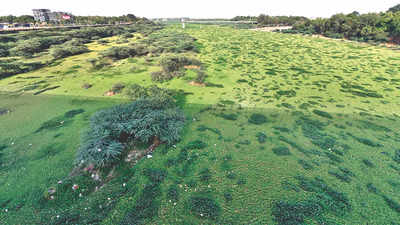
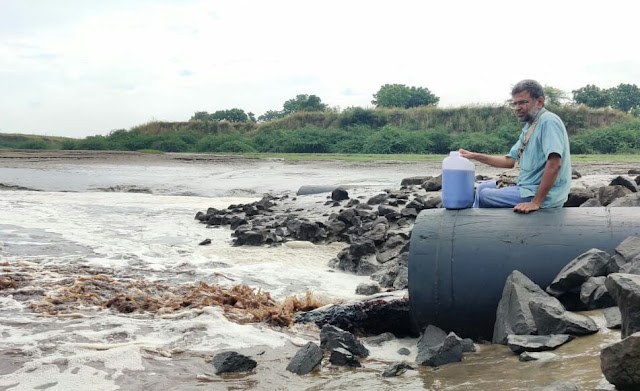



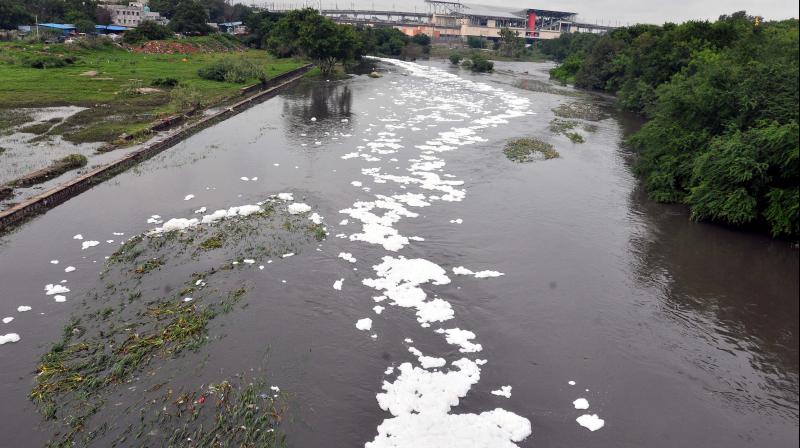
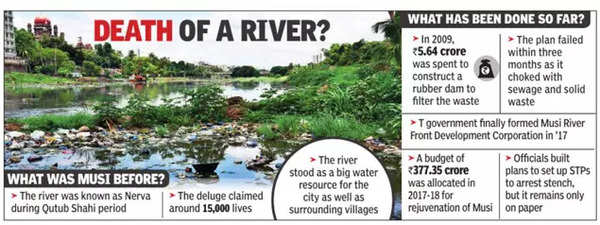

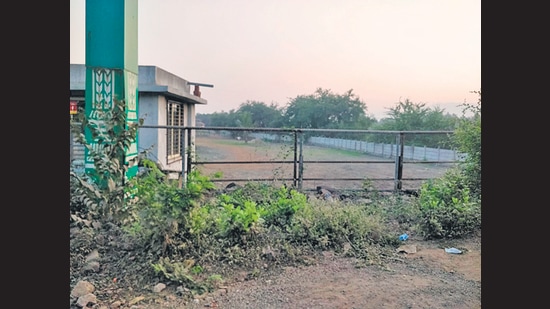
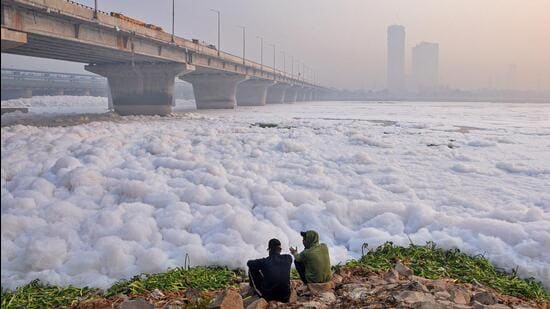

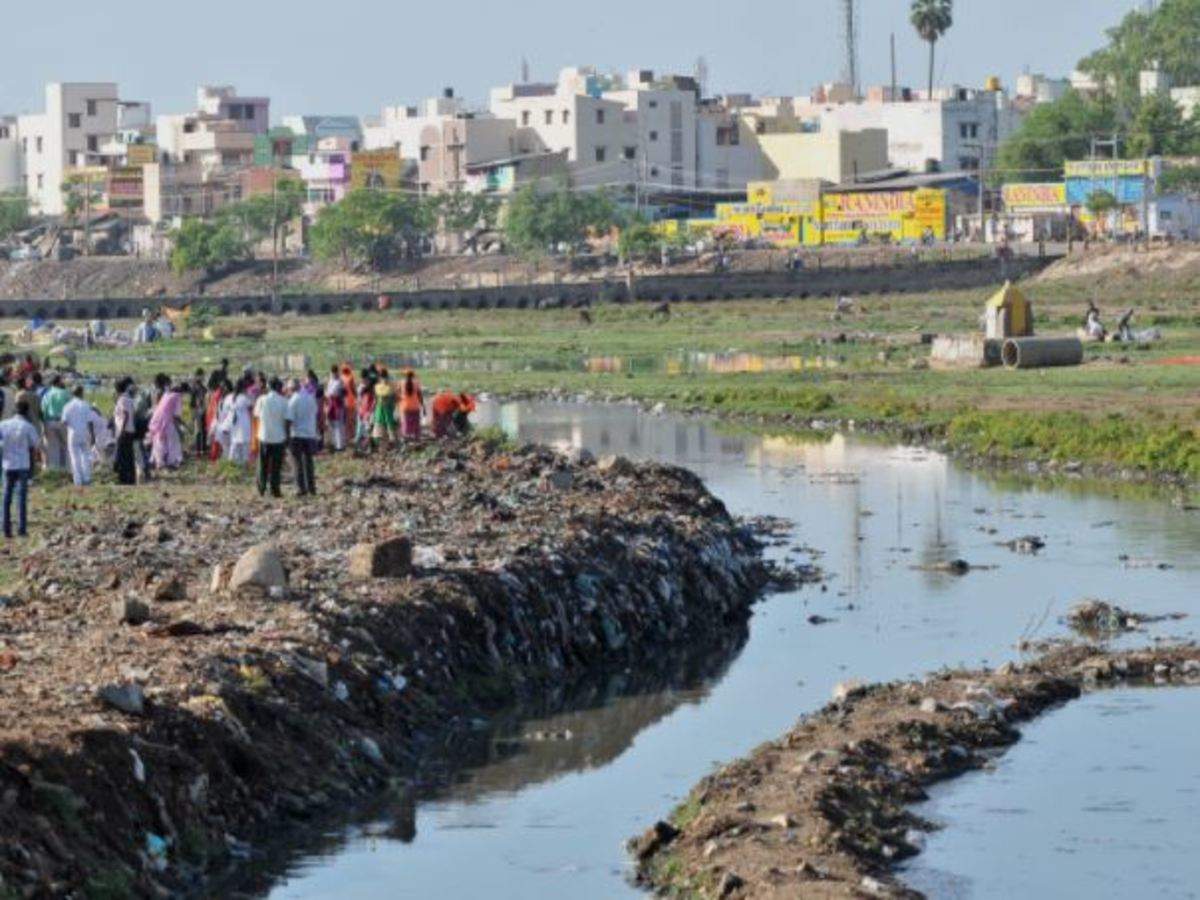
.jpg)


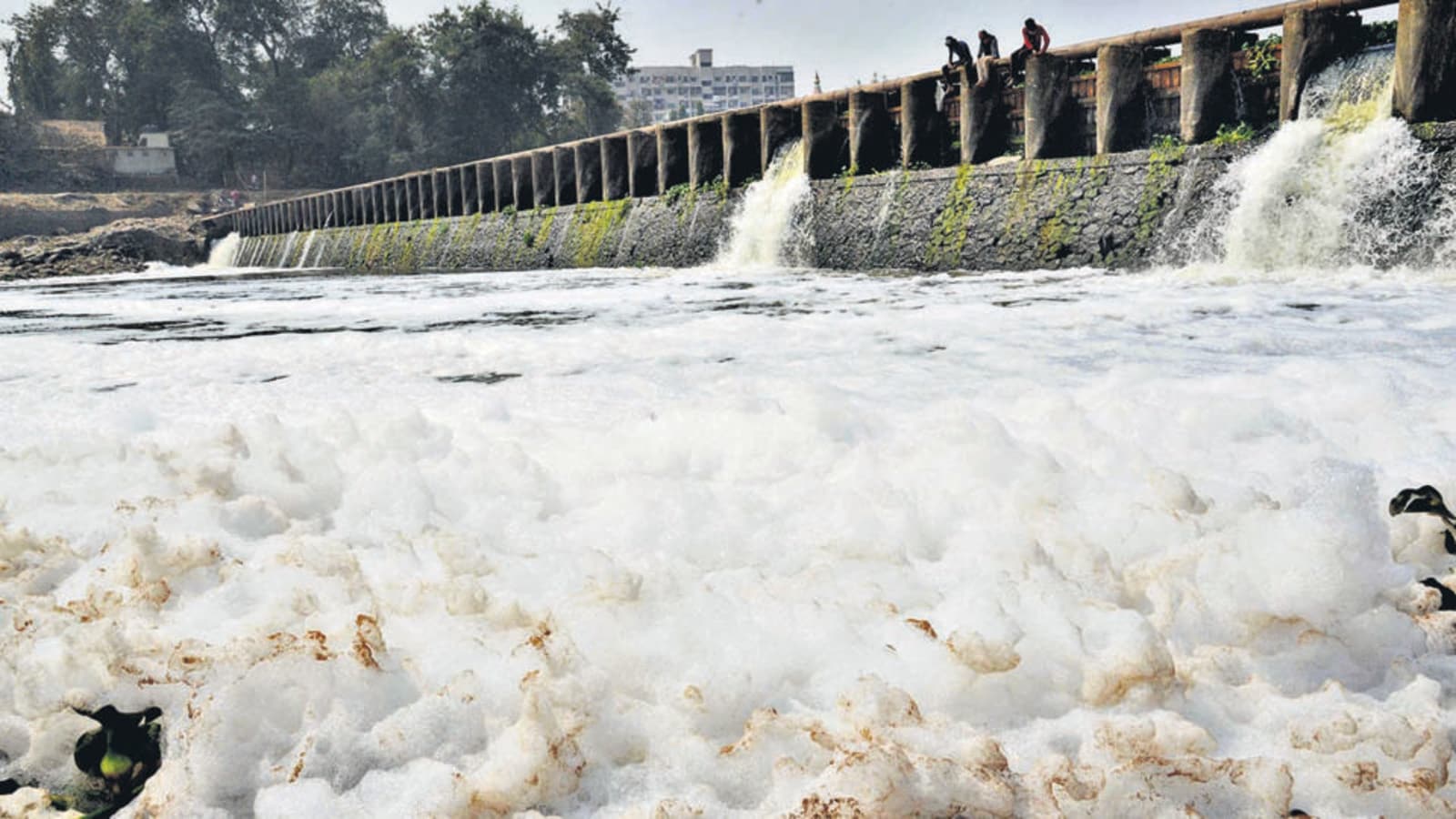
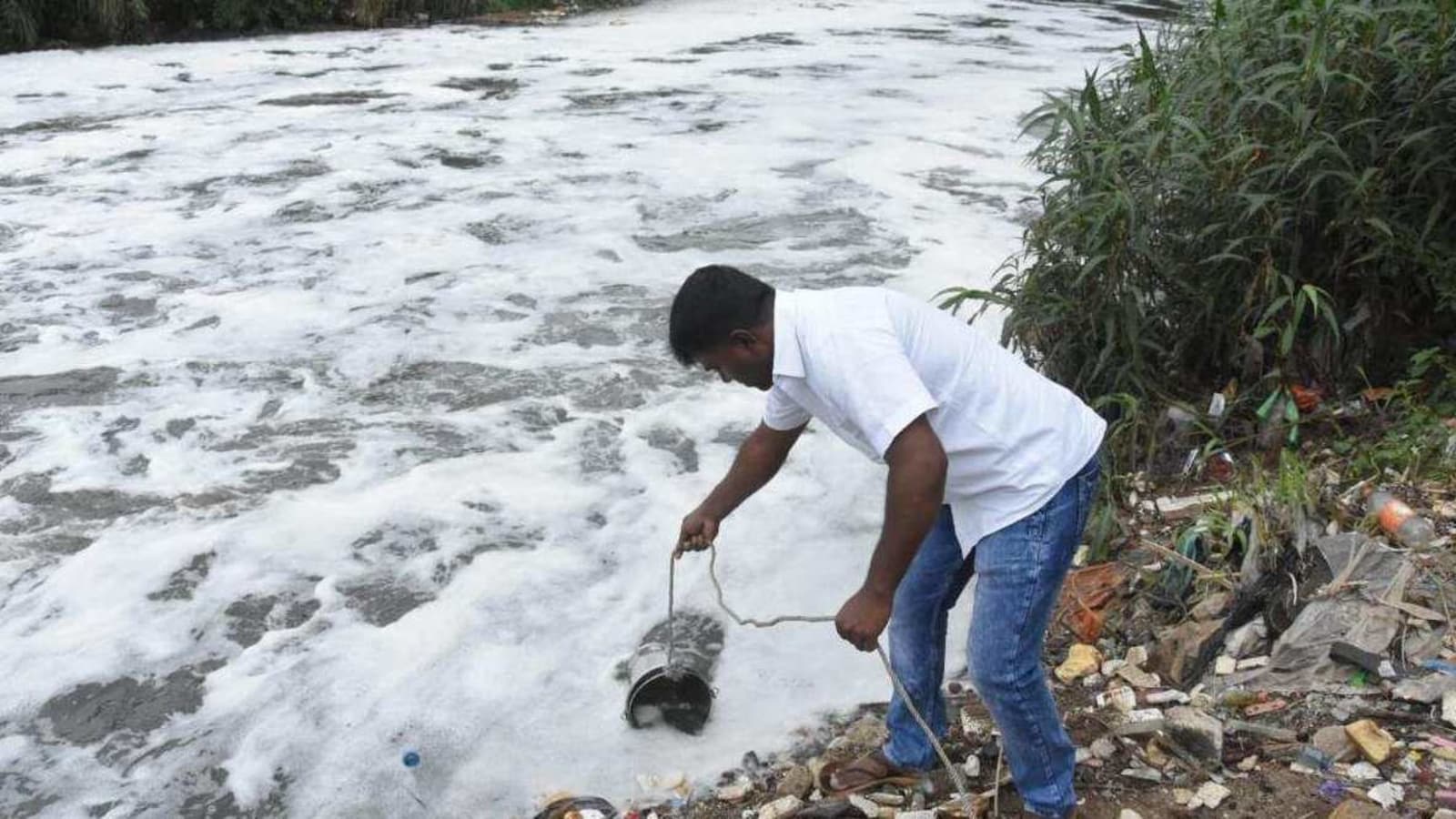
One thought on “India’s Urban Rivers in Crisis in 2022: Top Ten Cases”